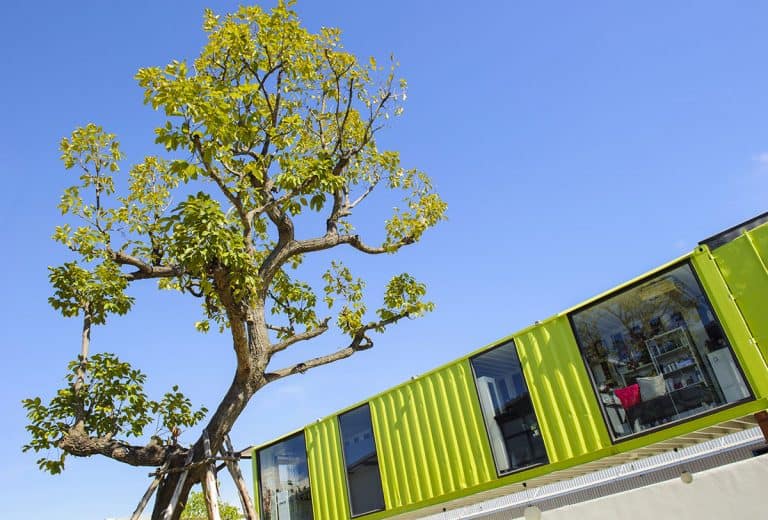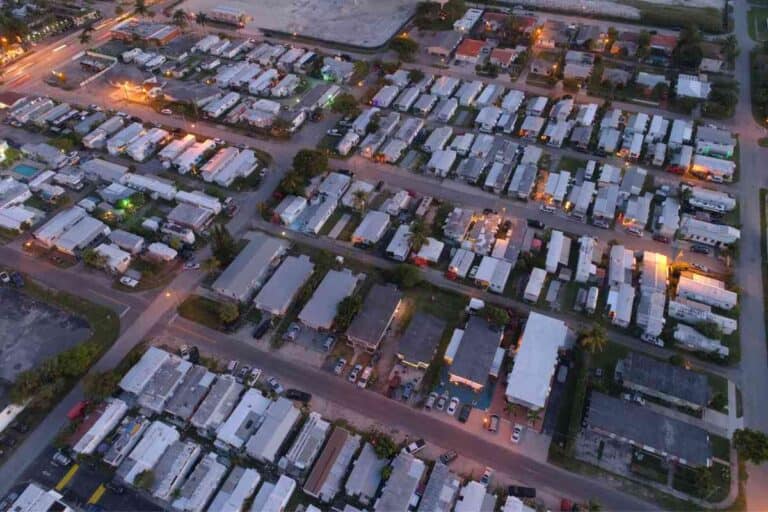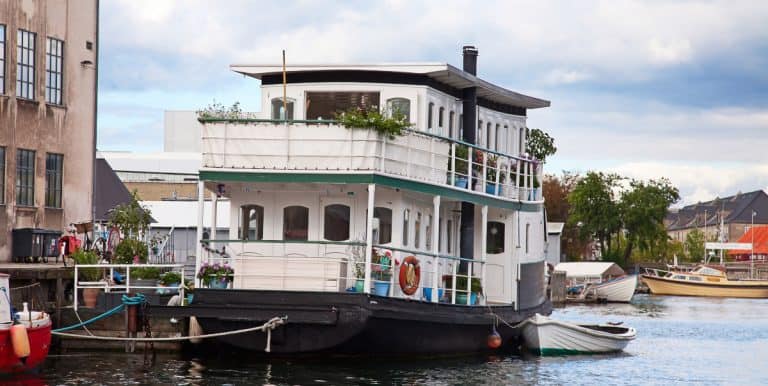How Long Do Log Cabins Take To Build? [A 10 Step Guide]
Wondering how long do log cabins take to build? Well, let’s find out! Many individuals consider living full-time in a log cabin to be a pipe dream. However, it can be quite difficult, either because it is too costly or because they believe they lack the necessary experience or time to build a log home.

How Long Do Log Cabins Take To Build?
The average completion time for a standard log cabin is 10 to 25 months, depending on a variety of factors, including complexity and scale of construction, availability of materials, manpower and tools, weather conditions, and the experience of the builders.
It is feasible to construct a log home on or off the grid with your own hands that you will enjoy for many years. It is important to understand all of the regular steps of building a bespoke log cabin, as well as how long each stage will take.
And don’t forget to perform regular cabin maintenance to keep it in good shape once it’s built.
Planning
We’ll simply touch on the planning phase briefly because the focus of this post is on how long it actually takes to construct a log cabin. You can plan as quickly as you want, but keep in mind that the more time you invest you layouts, construction schedule, blueprints, and plans, the more likely you are to cover every scenario and have a successful build.
Simple things like picking the best wood for your log cabin can take days to figure out. The right kind of wood is crucial for your log cabin’s longevity.
The planning stage should take at least 6 to 12 months where you will have to apply for the necessary permits required to work.
Preparation
The preparation and assembly stages are the two primary stages of your log home build after the planning stage. Preparation calls for obtaining all of your resources and preparing the site are all part of the preparation stage.
Obtaining and Preparing Logs
The time it takes will mostly be determined by where you get your logs and lumber. You’ll need a lot of time to prepare your logs if you cut them yourself. This entails debarking and laying them out to dry.
The debarking process is different for everyone and is usually dependent on when you cut your logs. It’s simpler to debark them in the spring; peeling a 20-foot log takes around an hour on average.
It could take up to two hours in the cold.
We’ve seen a lot of projects where the logs are cut down and used in a matter of days or weeks. If you do this, you will have a lot of shrinking issues. Allow at least 6 months for your logs to dry, and longer if feasible, depending on the logs you choose. Some people prefer to have their logs kiln dried, but we always suggest air drying logs if you have the time.
Although kiln drying logs speed up the work, it’s debatable if the log is as steady as one that has been air-dried.
We would recommend giving yourself two months if you are having your logs sawed to size at a timber yard.
Calling local yards and asking about time estimates will give you a better idea. This stage also entails clearing the space and installing the foundations on your construction site.

Cleaning Up the Area
This can be a simple operation depending on how level your property is and how much vegetation needs to be removed. This could be a straightforward day’s labor if you have a flat location with only stones and minor roots or bushes to remove.
If you need to remove existing structures, trees, or our huge boulders from the property, it could take up to a week. If the site is slanted, you may need to grade or level the ground as well, which could take several additional weeks.
Getting the Groundwork Done
This, too, will be determined by the type of foundation you choose. Whatever foundation you choose, you’ll need to stake out your building site.
This is a rather simple process that should just take an hour or two depending on the size of your project.
The pad foundation, strip foundation, and the raft foundation (concrete base) are the three most popular log home foundations.
Strip Foundation
It is the most time-consuming and costly of the three foundations, but nevertheless a viable option for many cabins.
Raft Foundation
It is a less expensive and faster alternative to strip foundation.
Concrete Pier Foundation
It is the most affordable type of foundation, with small yet deeper excavation sections.
When it comes to laying your foundations, the excavation stage can take up to a week if you have a flat property with good soil to deal with.
If your terrain has a slope or is more difficult to deal with, allow up to three weeks to lay your foundations. Getting the groundwork done roughly takes about 2–6 weeks (exclusive of drying the logs).
Construction Stage
The construction stage will most likely be the fastest and easiest part of the process. Unlike a traditional brick and mortar building, a log home’s wall is constructed in one piece; logs serve as the paint, plaster, inside wall, insulation, and exterior wall.
The cabin could take anywhere from a couple of days to a few months to build, depending on how many people you have helping you and your DIY expertise.
It’s critical to consider the weather and season during your construction period; you don’t want to start your project only to have to halt halfway through due to a storm or heavy rain.
Raising the Log Walls
This stage entails notching and laying the logs to create your walls. Since they have already been notched prior to assembly, most kit cabins fly up at this point.
This will take a little longer with unique hand-built dwellings because you will have to notch each log on-location. If you have a chainsaw, you can complete this task much more quickly.
Roof Installation
This stage entails constructing your log cabin’s gable walls and installing the roof. This stage’s duration is highly dependent on the resources you use. The following are the most popular log home materials:
- Wood shingles
- Felt shingles
- Felt for roofs
Roofing feels the quickest and wood shingles are the most durable (if you make each of the shingles on site). Your log cabin roof could take anything from a day to a week to construct.
Putting in the Flooring
Laying your floor might be a simple process. Groove and tongue boards are a popular choice since they can be installed by one person in a day or two. You’ll have to wait till the cabin is finished to stain and finish it.
Insulation
Insulation is usually done as part of the floor and roof sections, so you shouldn’t need to budget for it. If you want to insulate your log home walls, this is an exception.
Cutting a v-shaped slot in the top of each log and padding it with insulation will certainly add time to the process of lifting the logs.
You’ll also have to seal your wood cabin, which could take a few days depending on its size.
Doors and Windows
Allow one day to cut out your window and door openings, followed by a couple of days to install them. If you’re making your own windows and doors, give yourself more time.
Finishing Touches
To preserve your log cabin from the elements, you’ll need to waterproof and stain it.
It is feasible to stain the complete log home in one day; but, if you have a larger cabin, you should anticipate more time
And that’s it! Well, until you start considering dismantling your log cabin and moving it elsewhere!
FAQs
How long does a log cabin take?
According to a 2019 Survey, the average completion time for a standard family home is 8.1 months. The time it takes to construct a log home can range from 10 to 25 months, depending on a variety of factors, including weather conditions and experience.
Is it cheaper to buy or build a log cabin?
One of the most significant benefits of having a log home built is the cost. For a variety of reasons, log cabins are substantially less expensive to construct than traditional block-built residences.
Due to the rapidity with which our cabins are constructed, labor costs are significantly lower. Materials are substantially less expensive than concrete homes.
How long did it take settlers to build log cabins?
Emigrants from Finland and Sweden erected the first log dwellings in America. For thousands of years, these countries have manufactured log huts.
A single man could easily construct a small wood cabin within a few weeks, and with assistance, the time taken would be far less. The pioneers frequently built an attic where anyone could sleep if the roof was high enough.
To give the log home a strong foundation, early settlers would place a flat stone at every corner. Log cabin doors were typically made facing towards the south. During the day, this allowed the sun to shine into the cabin.
How long do log cabin homes last?
The ability of a log home to last for decades is one of the most crucial things to understand.
A log house may last for over a hundred years with proper upkeep and treatment according to the evidence of century-old wooden structures and log houses built all across Europe, where the original log homes had emerged.






